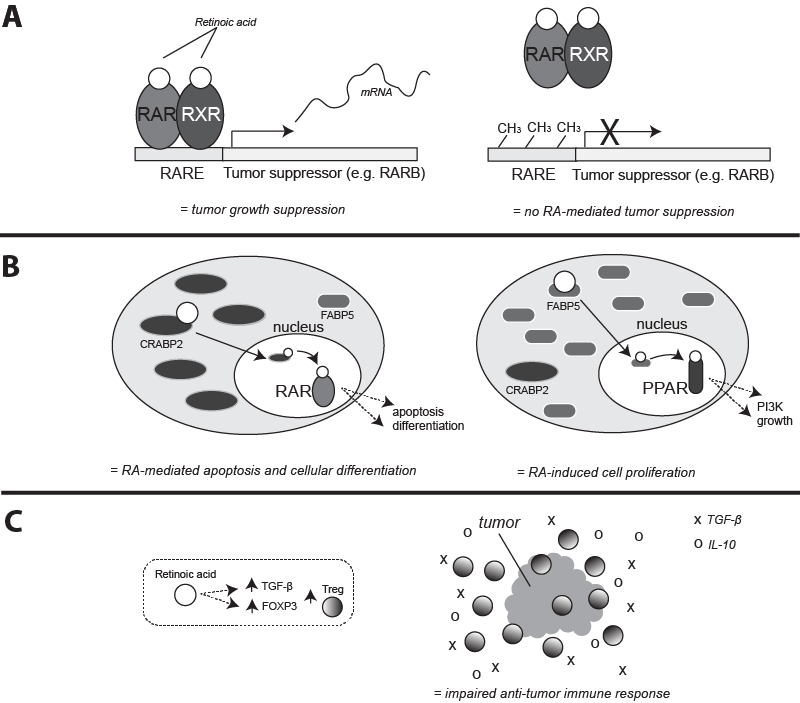
 |
| Figure 3: Potential mechanisms for retinoic-acid-mediated tumor suppression or progression. RA is involved in transcription of several tumor suppressor genes such as RARB and RARRES1; when the regulatory regions of these genes are epigenetically modified by DNA methylation or histone deacetylation, transcription is reduced and RA is unable to mediate these suppressive effects (A). In addition, the ratio of cellular CRABP2:FABP5 is indicated in promoting opposite cellular effects. In the presence of high CRABP2, RA activates RARs which canonically leads to apoptosis and differentiation; however, in the presence of high FABP5, RA activates PPAR isoforms which leads to PI3K-mediated cellular proliferation (B). A peripheral mechanism by which RA mediates tumor progression is via the induction of immunosuppressive Tregs (C). The presence of high numbers of Tregs leads to impaired anti-tumor immunity and immune escape; the secretion of TGF-β as well as IL-10 mediate further immunosuppressive effects. |